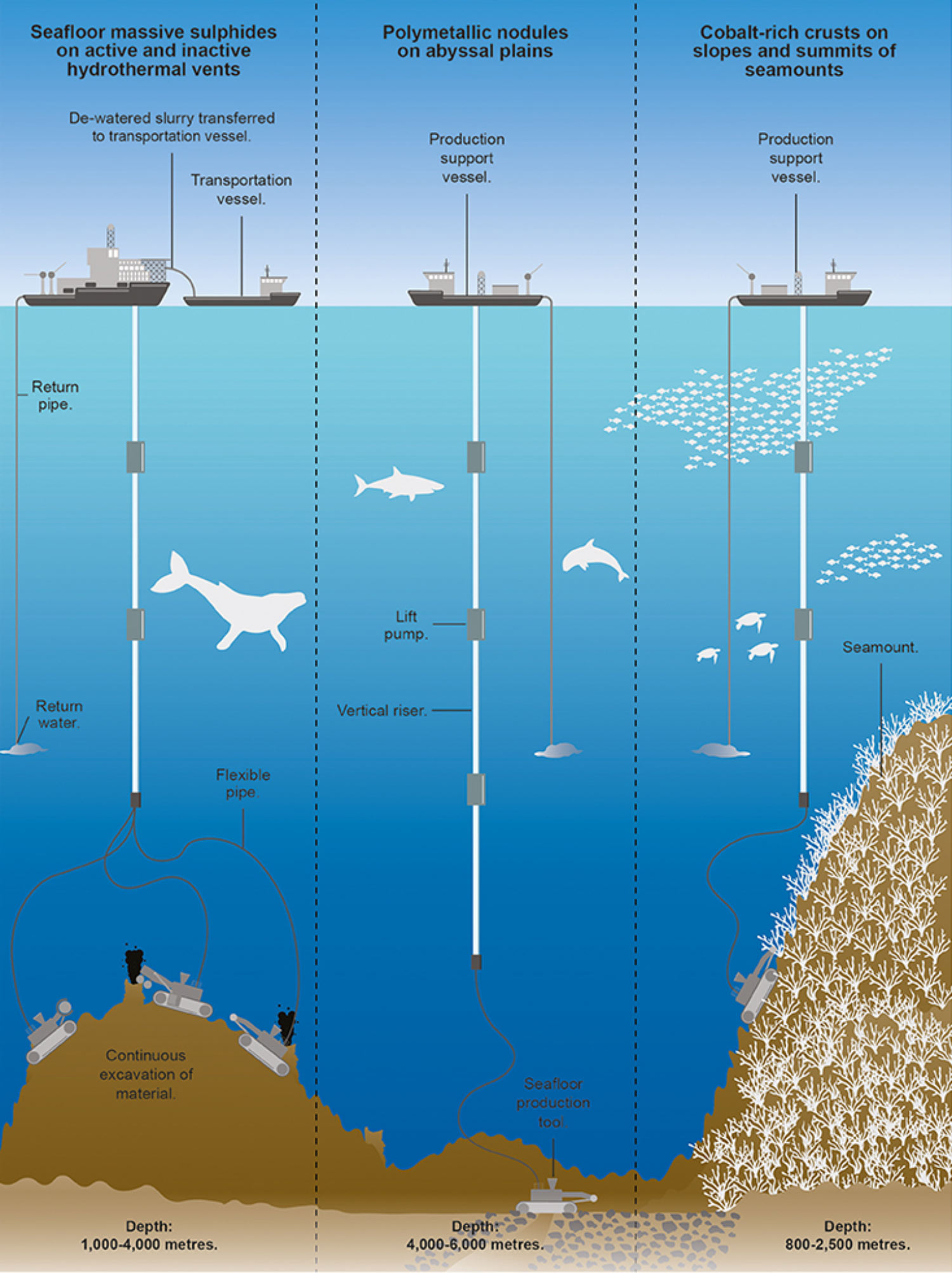Everything has started after the 1960’s book called “J. L. Mero’s Mineral Resources of the Sea“. After the idea of descending to the inner waters, many countries sent out their research vessels for the discovery of nodule deposits. It is true, the underground sea basin has vents that create massive sulfide deposits. The valuable metals such as silver, gold, copper, manganese, cobalt, and zinc are just some elements they contain. But what about the biodiversity which is dependent on these deposits?
Papua New Guinea became the first country to approve a permit for the exploration of minerals in the deep seabed. It is followed by China, the United Kingdom, Belgium, Germany, France and Japan.
The international law–based regulations on deep sea mining are protected by the United Nations Conventions on the Law of the Sea. From 1973 to 1982, the strict laws came into force in 1994. But the damages are still increases day by day.

Today, the ISA (International Seabed Authority), a UN institution, is the only body delivering the reseach certifications to companies. Greenpeace reported that 30 exploration licenses had been granted worldwide by ISA before 2018. But according to campaigners, deep-sea mining should stay as exploration. It shouldn’t be used as a commercial-scale mining. If the research pod can descend 3,000 meters to reach the seabed, drillings performed at this depth causes too much harm. For example, the scaly-foot snail has been put under the highly endangered species.

According to the evolutionary biologist Julia Sigwart “the iron that precipitates out of the vent fluid is incorporated into the shell and the scales of the scaly foot. It hasn’t grown an iron shell, but the available environmental iron on the surface has integrated into it” (The Guardian Weekly, 6 March 2020, pg27)
For other endangered animals please look at this page.
Unfortunately, deep-sea animals are no longer untouched
Recent technological advancements have given rise to the use of remotely operated vehicles (ROVs) to collect mineral samples from prospective mine sites. Using drills and other cutting tools, the ROVs obtain samples to be analysed for precious materials.
According to Halfar, J.; Fujita removing parts of the seafloor might disturb the habitat of benthic organisms with unknown long-term effects. Some of these animals are sea anemones, sponges, corals, sea stars, sea urchins, worms, bivalves and crabs. Aside from the direct impact of mining the area, some researchers and environmental activists have raised concerns about leakage, spills and corrosion that could alter the mining area’s chemical makeup (Danger of Deep-Sea Mining”. Science, 316(5827): 987).
For Bigelow, Laboratory for Ocean Sciences’ facts “Microbes across the seafloor” are responsible for essential ecosystem services. These services start from fueling the food web to powering global nutrient cycles. Environments that are promising for mining are also often the sites of globally-important microbial processes and unusual animal communities — and they are very slow to recover from disturbance.”
We, as human beings, should feel responsible for the destruction of the marine eco-system. For the sake of uncovering new industrial frontiers, we shouldn’t risk the deep-sea lives. There is no return if we do so and even without mentioning the human-caused climate change.


